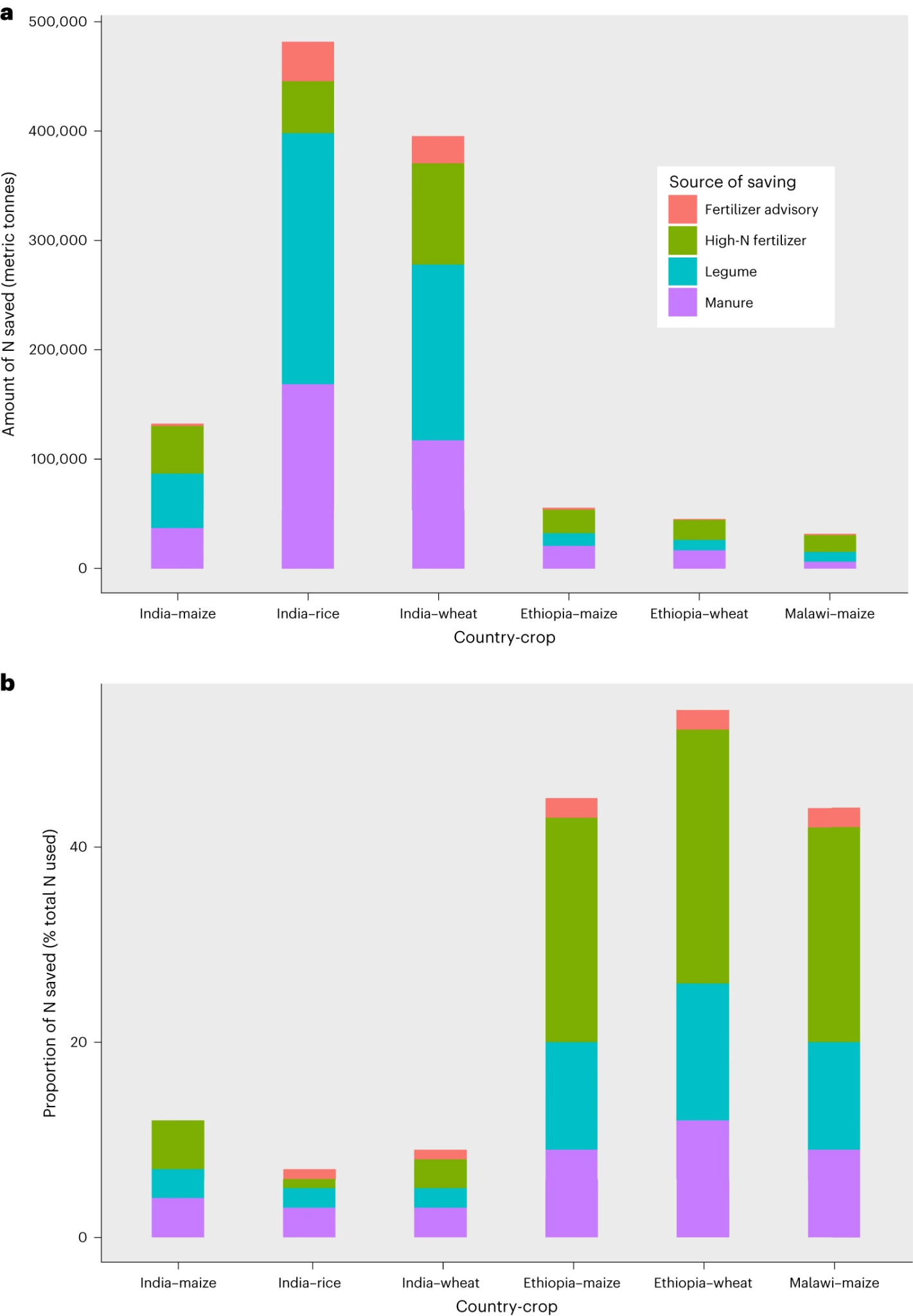June 29, 2023 | Nature Sustainability
Introduction: Nitrogen (N) is crucial for crop yield, but excessive synthetic fertilizer use harms the environment. High-input systems lose over 50% of applied N, while low-input systems suffer from insufficient N, impacting plant growth. Nitrogen Use Efficiency (NUE) varies globally. Overreliance on synthetic N fertilizers contributes to greenhouse gas emissions and fluctuating food prices. The Russia–Ukraine war has triggered fertilizer shortages, threatening agricultural productivity and food security. International Maize and Wheat Improvement Center collaborates with International Crops Research Institute for the Semi-Arid Tropics in India, Africa Rice Center in Madagascar, and various researchers from US to assesses N status in India, Ethiopia, and Malawi, proposing immediate N management strategies to mitigate crises without compromising crop yield.
Key Findings: This study suggests significant potential for optimizing nitrogen (N) fertilizer use in agricultural systems, particularly in India (11% savings), Ethiopia (49% savings), and Malawi (44% savings). The proposed strategy involves transitioning to more cost-effective, high-N fertilizers like urea, integrating compost, and incorporating legumes into the farming system. The optimization aims to address N deficiencies in these systems and enhance overall efficiency.
The study advocates for a geospatially differentiated approach to fertilization, emphasizing the targeted application of high-N fertilizers in low-yield, N-deficient areas and a balanced supply of N, phosphorus (P), potassium (K), and micronutrients in high-yield systems. This tailored strategy aims to maximize agricultural productivity while minimizing environmental impact.
At the national level, the study recommends that governments invest in extension services and realign subsidies to support and incentivize improved N management practices at the farm level. This approach seeks to promote sustainable and efficient fertilizer use, contributing to both economic and environmental benefits in agricultural landscapes.
Read more: Spatially differentiated nitrogen supply is key in a global food–fertilizer price crisis

Fig. 5: Projected N-fertilizer savings from near-term interventions.
a, Estimated total N fertilizer saved in cereal production systems in India, Ethiopia and Malawi through: (1) promotion of manure use (including compost) and legume production; (2) subsidized access to increased use of high-N fertilizer types; and (3) advisories for improved fertilizer use efficiency. b, Proportion of N fertilizer saved relative to N fertilizer used in cereal production in India, Ethiopia and Malawi.





